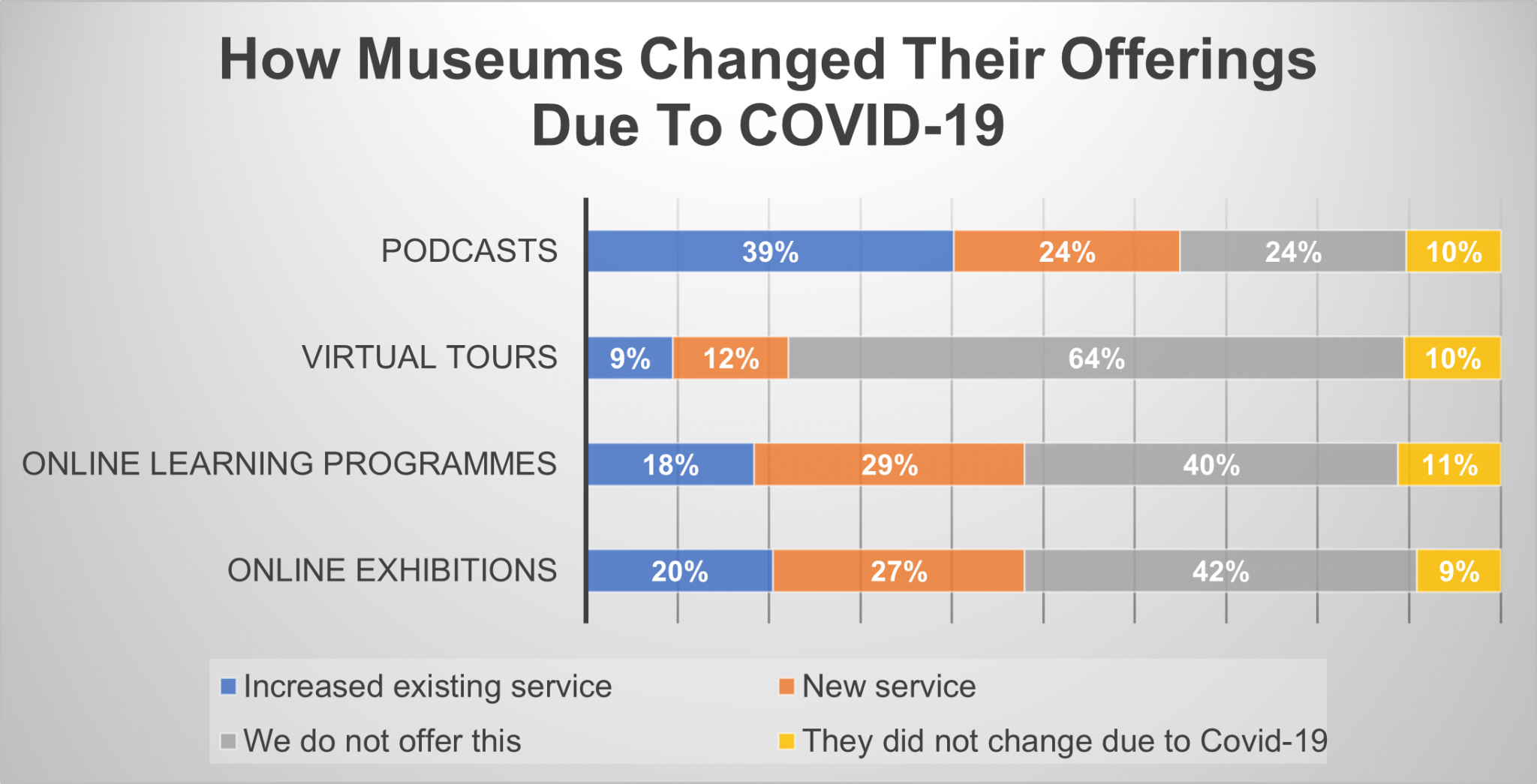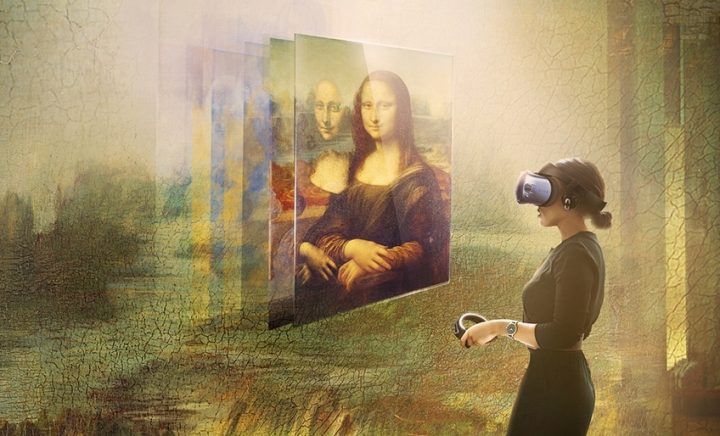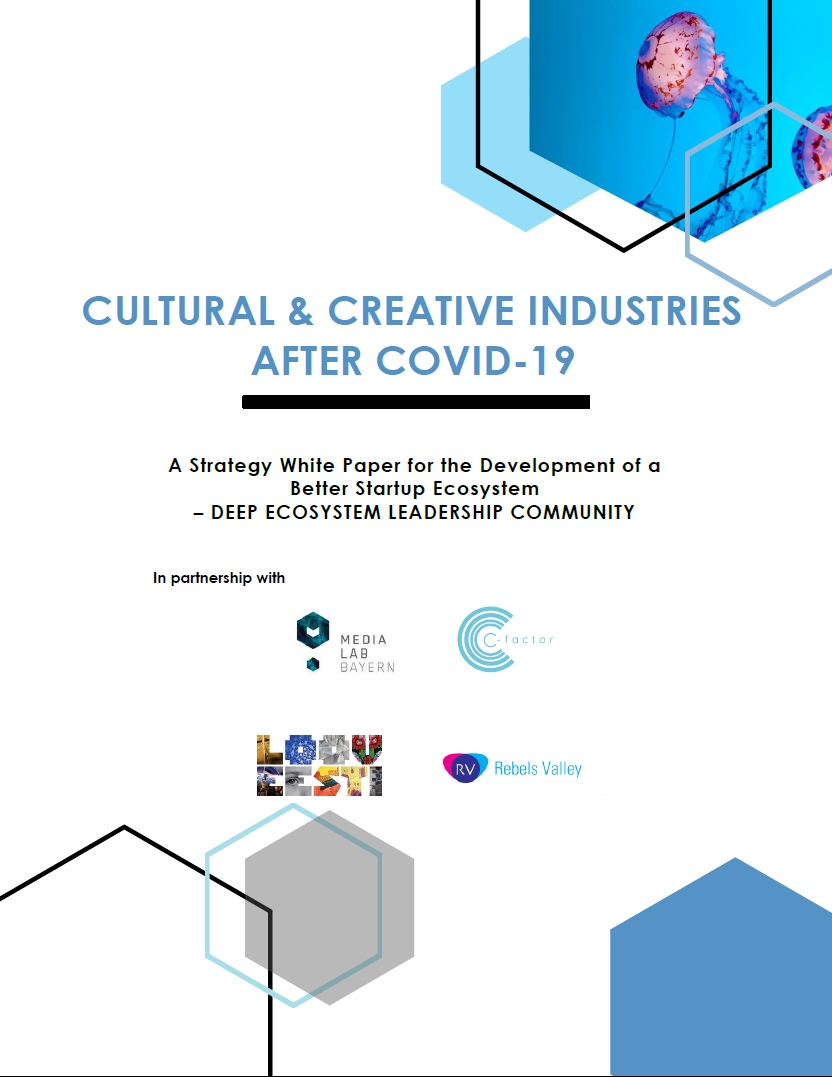DEEP Ecosystem Community publishes Strategy White Paper for better collaboration between startup ecosystems and the Cultural and Creative Industries
The 2021 DEEP Ecosystems Conference brought together 175 practitioners and experts from the startup scenes of more than 45 countries to have data-driven discussions on the most pressing challenges their ecosystems face. In a series of Strategy White Papers, we publish the conference´s key findings and recommendations on building more transnational, inclusive, entrepreneur-driven, and impactful ecosystems. To get access to all publications, make sure to sign up to our newsletter.
Challenges posed by the COVID-19 pandemic has brought home the message to museums, cultural institutions, and creative businesses that they need innovative ways of dealing with their clients, reaching new audiences and evolving into self-sustaining ecosystems.
Our White Paper on Cultural & Creative Industries After COVID-19 provides data-based insights and expert recommendations on how the Cultural and Creative Industries (CCI) can build closer relations with innovation and startup ecosystems to foster a more innovative CCI sector in Europe.
Strategy White Paper: Cultural & Creative Industries After COVID-19
The challenges are igniting fresh thinking in the sector.
Digitalization has been identified as an immediate need, for accessing creative content, reaching out to new audiences as well as driving economic growth. 8 out of 10 museums in a 2021 survey by the Network of European Museum Organizations have voiced the need for support with digital tools.


While there are fine examples to learn from, like The British Museum making 3D images of their collection available to audiences and The Museo Nacional Thyssen- Bornemisza in Madrid arranging virtual tours with interactive guides, more needs to be done.
Top 5 Facts on Cultural and Creative Industries in Europe
- Investments in CCI related startups peaked with 5.61bn € in 2019.
- 93% of museums have started or increased online services due to COVID-19 (Network of European Museum Organizations 2021).
- 2020 saw a decline of -30% of total investments in CCI startups.
- CCI startup seed investments (500k – 2mn €) are declining since 2017.
- We see trends toward subscription OTT media streaming services as well as the rise of blockchain, virtual reality, and AI.
Virtual and Augmented Reality are gaining popularity as solutions to attract new audiences. For startups it could be a new market to access with their technologies. Art tech companies are also driving new ways of transacting and storing digital art with NFT blockchain-based markets.
Ecommerce is driving sales, not only for pieces of art but increasingly for immersive performing arts through cross-media productions.
The pandemic has brought into focus the value of arts and culture, the need to find new ways of meeting audiences, new channels of product delivery, etc. Besides huge problems we have faced, we also do have some pros: huge learning curves on tools for online events; new skills and competencies in using new technologies; accelerated capacity building through digitization; increased visibility, etc.
Eva Leemet, Managing Director of Creative Estonia
Perhaps most importantly, there is recognition that collaboration between CCI organizations and art tech companies can be beneficial for both.
Business incubators have tended to focus on media and advertisement, leaving other CCI areas behind. Cooperation between research universities and businesses in traditional CCI sectors has also been lacking. Traditionally resistant to change and new business models, the open dialogue between CCI players and innovation ecosystems creates hope for the development of solutions for the sector.
As digitization of the global economy is speeding up, I can see enormous potential for the projects combining culture and technology. From my point of view the future belongs to smaller, agile initiatives that can fully benefit from new tools like crowdfunding, asset tokenization and virtualization. If we can crowdfund independent documentaries, why can’t we finance more entertaining content reaching mass audiences?
Tomasz Kowalczyk, Partner at Rebels Valley
The globalization of CCI institutions can lead to a greater variety of solutions and fresh viewpoints as well as creation of teams of professionals who can be called upon to lead other organizations down similar paths in future.
Lina Timm, of Media Lab Bayern, that runs the popular Media Start-up Fellowship program, expressed her views on what it would take for a media start-up to succeed:
- All start-ups need the same – A committed team, amazing product and great marketing and sales. But without specific industry knowledge on top, it may not amount to much.
- Lure them with money – The Euro 40,000 budget is what they come for, but end up valuing the coaching and exposure much more.
- Accelerators are the new universities – It teaches them skills which outlast any project-specific funding.
- Adapt expectations on business models and funding to the industry – Each business has its own rhythm. Expecting the scalability of another industry start-up may be self-defeating.
- Create a community of innovators – Eventually it is about people. Creating a community of innovative talent keeps everyone inspired.
Our recommendations
Based on the data presented and exchanges between experts during the DEEP Startup Ecosystem Conference, the DEEP Ecosystem Leaders have evolved a set of recommendations for a more innovative European Cultural and Creative Industries (CCI) sector:
- Being Innovative: As evolving customer behavior creates the need for changes in existing business models and organizations, ecosystems can help organizations in the CCI sector become innovation-friendly and digitally aware and enable them to make the leap to engage modern customers.
- European Funding: Investment is beneficial for traditional CCI in preserving and enhancing cultural heritage with the help of technology. Funding opportunities and grants are available, like Horizon Europe and Creative Europe.
- Cooperation & Partnership: Cultural institutions have traditionally not worked with innovation ecosystems. They need to introduce digital solutions, build connections with stakeholders and be ready to experiment.
- Support in Transition: Training and coaching covering topics like funding and digital revenue models could be eye-opening for the sector. Coupled with innovation, it could trigger the transition to a self-sustaining ecosystem.
- Diversity: Diversity has been a challenge for the sector. A close collaboration of multiple organizations can bring cultural and creative experiences to their audience.
Strategy White Paper: Cultural & Creative Industries After COVID-19
Image credit: HTC / VIVE Arts


One thought on “New Audiences for the Cultural and Creative Sector”
Comments are closed.